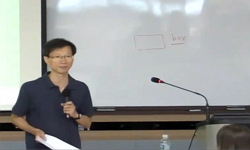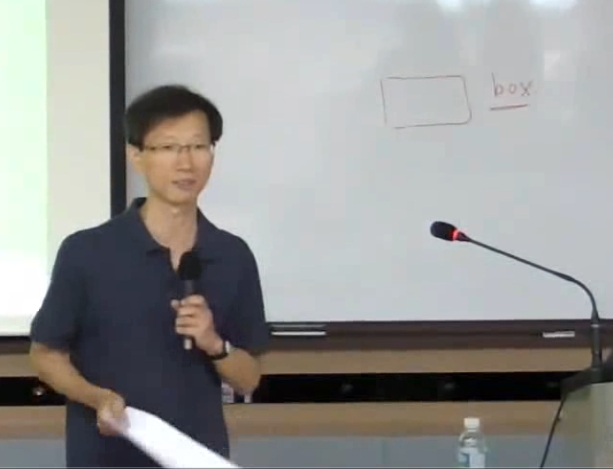The purposes of this study are to conduct a quantitative analysis on words found in lyrics of popular songs and to understand how those words are used. The study referred to the final rankings presented in ‘GAON Music Chart’ in the first half year...
http://chineseinput.net/에서 pinyin(병음)방식으로 중국어를 변환할 수 있습니다.
변환된 중국어를 복사하여 사용하시면 됩니다.
- 中文 을 입력하시려면 zhongwen을 입력하시고 space를누르시면됩니다.
- 北京 을 입력하시려면 beijing을 입력하시고 space를 누르시면 됩니다.
https://www.riss.kr/link?id=A100283266
- 저자
- 발행기관
- 학술지명
- 권호사항
-
발행연도
2014
-
작성언어
-
- 주제어
-
KDC
0
-
등재정보
KCI등재후보
-
자료형태
학술저널
-
수록면
23-45(23쪽)
-
KCI 피인용횟수
2
- 제공처
- 소장기관
-
0
상세조회 -
0
다운로드
부가정보
다국어 초록 (Multilingual Abstract)
The purposes of this study are to conduct a quantitative analysis on words found in lyrics of popular songs and to understand how those words are used. The study referred to the final rankings presented in ‘GAON Music Chart’ in the first half year of 2013and selected these songs from the first rank to the 50th rank in the digital general chart as research subjects. As songs enjoyed by the public, popular songs are regardedas a significant channel to mirror and represent languages of the public. However, nevertheless, the academic world has not dealt with the popular songs often. But, today, it is the popularsongs that are read and remembered more frequently than either contemporary novels or poems, and that being so, this study believes that the popular songs are worth being investigated more than any of the latter from a viewpoint of the linguistics. In the light of that, this study selects the latest and the most famous popular songs and carries out a quantitative analysison the songs in order to understand the real characteristics of the present language. This study aimed to know these particular linguistic characteristics found in the popular songs using the quantified figures. In particular, the study focused on personal pronouns and relative honorific systems appeared in the lyrics of the popular songs. As for the personal pronouns, the study noticed the development of ‘Neo’, a second-person pronoun. While these other second-person pronouns such as ‘Nim’ and ‘Dangshin’ were frequently applied in the past, now, ‘Neo’ or even ‘Nee’ which is an advanceds poken version of ‘Neo’ was being used in the lyrics quite often. In terms of the relative honorific systems used in the lyrics of the popular songs, the study found more of the informal system than the formal system, and plus, ‘Haera’ and ‘Hae’ turned out to be most frequently used in the lyrics. In addition, ‘Haera’ went with the second-person pronoun, ‘Neo’, and that proved how often the informal system is preferred for the lyrics of the contemporary popular songs. This study is considered academically significant in that it had analyzed the lyrics of the popular songs quantitatively and that it had tried to look into the language of the public by understanding the frequency.
참고문헌 (Reference)
1 김익두, "한국 대중가요 연구사 검토" 한국공연문화학회 24 (24): 5-45, 2012
2 홍연주, "한국 대중가요 노랫말의 특성에 관한 담론" 한국엔터테인먼트산업학회 5 (5): 1-4, 2011
3 고영근, "표준국어문법론" 탑출판사 2009
4 김광해, "일제 강점기의 대중가요에 대한 계량언어학적 연구: 유성기 음반 채록본을중심으로" 3 : 197-215, 1998
5 김광해, "일제 강점기 대중가요 연구" 박이정 1999
6 한미선, "대중가요에 나타난 청소년 언어의 실태분석" 충남대학교 교육대학원 1999
7 박보현, "대중가요 제목에 나타난 언어 사용 실태 연구 : 2005-2009년 인기 가요를대상으로" 2 : 85-96, 2011
8 민충환, "대중가요 노랫말에 나타난 언어의 특이점" 21 : 39-50, 2000
9 "네이버 지식백과"
10 "가온차트"
1 김익두, "한국 대중가요 연구사 검토" 한국공연문화학회 24 (24): 5-45, 2012
2 홍연주, "한국 대중가요 노랫말의 특성에 관한 담론" 한국엔터테인먼트산업학회 5 (5): 1-4, 2011
3 고영근, "표준국어문법론" 탑출판사 2009
4 김광해, "일제 강점기의 대중가요에 대한 계량언어학적 연구: 유성기 음반 채록본을중심으로" 3 : 197-215, 1998
5 김광해, "일제 강점기 대중가요 연구" 박이정 1999
6 한미선, "대중가요에 나타난 청소년 언어의 실태분석" 충남대학교 교육대학원 1999
7 박보현, "대중가요 제목에 나타난 언어 사용 실태 연구 : 2005-2009년 인기 가요를대상으로" 2 : 85-96, 2011
8 민충환, "대중가요 노랫말에 나타난 언어의 특이점" 21 : 39-50, 2000
9 "네이버 지식백과"
10 "가온차트"
11 김홍석, "20세기 후반 대중가요 노랫말의 오용 실태" 한국국어교육학회 (83) : 459-484, 2009
12 장유정, "1970-80년대 한국 대중가요 가사의 특징 -공중파 방송 인기곡을 중심으로-" 한국공연문화학회 24 (24): 79-113, 2012
동일학술지(권/호) 다른 논문
-
A Comparison of Different Vocabulary Learning Strategy Use between EFL and CSL Learners
- 전북대학교 인문학연구소
- ( Chin Min Lin )
- 2014
- KCI등재후보
-
- 전북대학교 인문학연구소
- 고아라 ( A Ra Go )
- 2014
- KCI등재후보
-
- 전북대학교 인문학연구소
- 김성준 ( Seong Jun Kim )
- 2014
- KCI등재후보
-
- 전북대학교 인문학연구소
- 보력도 ( Bolod )
- 2014
- KCI등재후보
분석정보
인용정보 인용지수 설명보기
학술지 이력
| 연월일 | 이력구분 | 이력상세 | 등재구분 |
|---|---|---|---|
| 2022 | 평가예정 | 신규평가 신청대상 (신규평가) | |
| 2021-12-01 | 평가 | 등재후보 탈락 (계속평가) | |
| 2020-12-01 | 평가 | 등재후보로 하락 (재인증) |  |
| 2017-01-01 | 평가 | 등재학술지 선정 (계속평가) |  |
| 2016-01-01 | 평가 | 등재후보학술지 유지 (계속평가) |  |
| 2014-01-01 | 평가 | 등재후보학술지 선정 (신규평가) |  |
학술지 인용정보
| 기준연도 | WOS-KCI 통합IF(2년) | KCIF(2년) | KCIF(3년) |
|---|---|---|---|
| 2016 | 0.14 | 0.14 | 0 |
| KCIF(4년) | KCIF(5년) | 중심성지수(3년) | 즉시성지수 |
| 0 | 0 | 0 | 0.11 |






 KCI
KCI KISS
KISS







